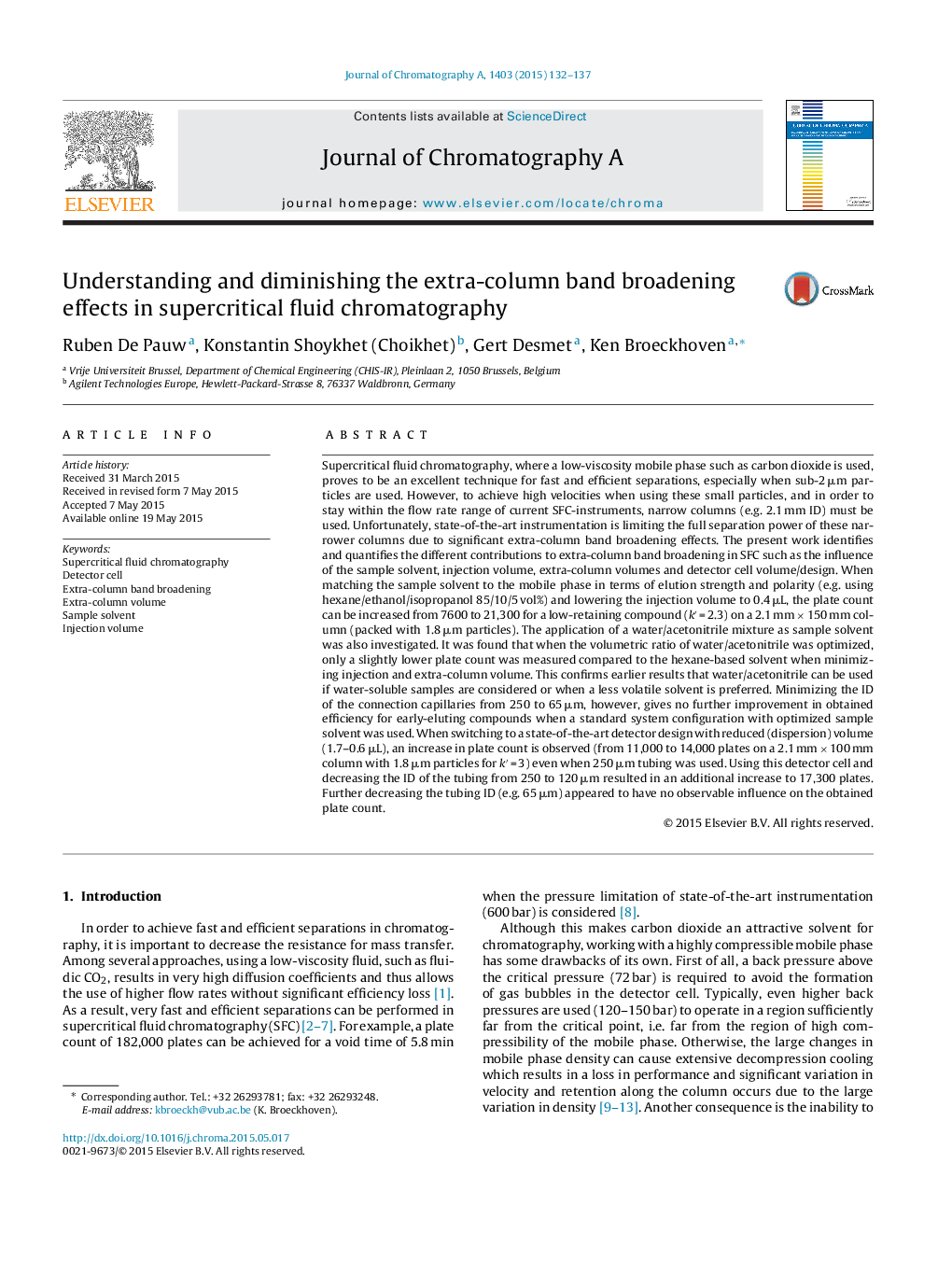| کد مقاله | کد نشریه | سال انتشار | مقاله انگلیسی | نسخه تمام متن |
|---|---|---|---|---|
| 1201334 | 1493523 | 2015 | 6 صفحه PDF | دانلود رایگان |
عنوان انگلیسی مقاله ISI
Understanding and diminishing the extra-column band broadening effects in supercritical fluid chromatography
ترجمه فارسی عنوان
درک و کاهش اثرات گسترده باند اضافی ستون در کروماتوگرافی سیال فوق کریتی
دانلود مقاله + سفارش ترجمه
دانلود مقاله ISI انگلیسی
رایگان برای ایرانیان
کلمات کلیدی
کروماتوگرافی مایع فوق بحرانی، سلول آشکارساز، باند اضافی ستون، حجم اضافی ستون، حلال نمونه حجم تزریق،
موضوعات مرتبط
مهندسی و علوم پایه
شیمی
شیمی آنالیزی یا شیمی تجزیه
چکیده انگلیسی
Supercritical fluid chromatography, where a low-viscosity mobile phase such as carbon dioxide is used, proves to be an excellent technique for fast and efficient separations, especially when sub-2 μm particles are used. However, to achieve high velocities when using these small particles, and in order to stay within the flow rate range of current SFC-instruments, narrow columns (e.g. 2.1 mm ID) must be used. Unfortunately, state-of-the-art instrumentation is limiting the full separation power of these narrower columns due to significant extra-column band broadening effects. The present work identifies and quantifies the different contributions to extra-column band broadening in SFC such as the influence of the sample solvent, injection volume, extra-column volumes and detector cell volume/design. When matching the sample solvent to the mobile phase in terms of elution strength and polarity (e.g. using hexane/ethanol/isopropanol 85/10/5 vol%) and lowering the injection volume to 0.4 μL, the plate count can be increased from 7600 to 21,300 for a low-retaining compound (kâ²Â = 2.3) on a 2.1 mm Ã 150 mm column (packed with 1.8 μm particles). The application of a water/acetonitrile mixture as sample solvent was also investigated. It was found that when the volumetric ratio of water/acetonitrile was optimized, only a slightly lower plate count was measured compared to the hexane-based solvent when minimizing injection and extra-column volume. This confirms earlier results that water/acetonitrile can be used if water-soluble samples are considered or when a less volatile solvent is preferred. Minimizing the ID of the connection capillaries from 250 to 65 μm, however, gives no further improvement in obtained efficiency for early-eluting compounds when a standard system configuration with optimized sample solvent was used. When switching to a state-of-the-art detector design with reduced (dispersion) volume (1.7-0.6 μL), an increase in plate count is observed (from 11,000 to 14,000 plates on a 2.1 mm Ã 100 mm column with 1.8 μm particles for kâ²Â = 3) even when 250 μm tubing was used. Using this detector cell and decreasing the ID of the tubing from 250 to 120 μm resulted in an additional increase to 17,300 plates. Further decreasing the tubing ID (e.g. 65 μm) appeared to have no observable influence on the obtained plate count.
ناشر
Database: Elsevier - ScienceDirect (ساینس دایرکت)
Journal: Journal of Chromatography A - Volume 1403, 17 July 2015, Pages 132-137
Journal: Journal of Chromatography A - Volume 1403, 17 July 2015, Pages 132-137
نویسندگان
Ruben De Pauw, Konstantin Shoykhet (Choikhet), Gert Desmet, Ken Broeckhoven,
